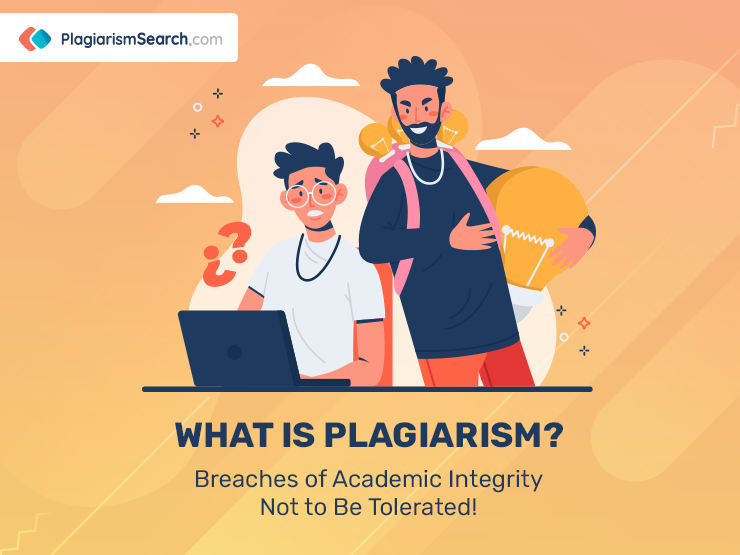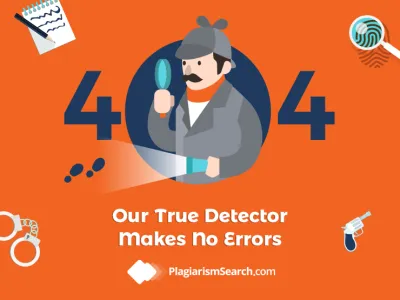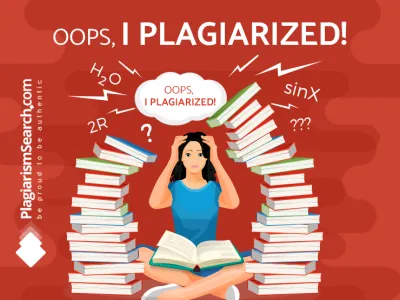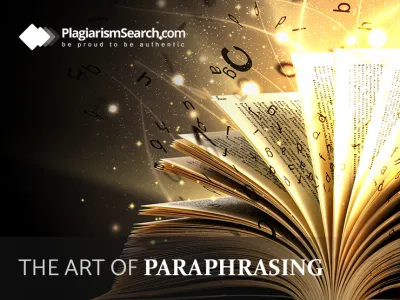
What is Plagiarism? Breaches of Academic Integrity Not to Be Tolerated!
What is Plagiarism?
If one gives the ideas of other authors in one’s own work without any consent from them and giving no due reference to them, it is called plagiarizing. Complete acknowledgement of the efforts of other authors is a must no matter whether the materials are published or unpublished. This answer to the question ‘What is plagiarism?’ covers documents of electronic and printed types, and even manuscripts.
In terms of academic life, students who plagiarize actually steal the ideas and use them as their own. The education settings of different kinds, schools, colleges, and universities, have an increasing concern about this issue under the conditions of unlimited access to any materials online and their unauthorized use by the students in their papers. There is an evident decline in the adherence to the principles of academic honesty and more and more students use the ideas of others outrageously.
How is plagiarism defined in different studies?
- “The action or practice of plagiarizing; the wrongful appropriation or purloining, and publication as one's own, of the ideas, or the expression of ideas (literary, artistic, musical, mechanical, etc.) of another” (The Compact Edition of the Oxford English Dictionary (COED)
- “Presenting, as one's own, the ideas or words of another person or persons for academic evaluation without proper acknowledgement” (Hard et al., 2006, p. 1059)
- “One or more passages that was word-for-word the same as another source without appropriate citation and quotation marks” (Belter & DuPre, 2009, p. 259).
- “Plagiarism involves literary theft, stealing (by copying) the words or ideas of someone else and passing them off as one’s own without crediting the source” (Park, 2003, p. 472).
No matter what the exact answer to the question ‘What is plagiarism?’ is, the definition always implies the act of stealing. Thus, every student should be extremely careful to prevent any blames for plagiarism and get an awareness why plagiarism is morally and ethically wrong.
What Is Wrong about Plagiarizing?
It is a generally known fact that plagiarizing, the students violate the honor code of their school and even their workplace later on. They break the ethical norms and if they are caught, they have severe punishments at school, get dismissed from their jobs, or even see their career and promotions ruined.
What makes plagiarism dishonest and morally incorrect?
First of all, plagiarism can be compared to the act of theft. It does not matter whether it goes about taking the property of other people without their consent or taking the ideas of them, this behavior is subject to reprehension. Secondly, you have no right to take the intellectual or physical property of other people and stealing means that you benefit and the other person suffers a loss.
Are there any legal consequences of plagiarizing? Has any plagiarizer faced any actions in court? Have any of them got sued? The concept of copyright infringement turns copying someone’s ideas into a legal action. The creator of some exclusive work has a set of individual rights which are defined as copyright. Taking this work without any consent or permission from the creator, the plagiarizer commits violation of those rights granted exclusively to the creator.
Is copyright the only solution to get plagiarizers to the court and sue them? Not really. If the originality of the work is a condition stipulated for in a contract, a person who submits the project or research grant violates the principle of originality, it can lead to a serious lawsuit. In most cases, the punishment for plagiarizing is similar to that for violating civil law. Thus, plagiarism is not a reason to get into prison, but the crime can be categorized as a felony depending on the person and source of stealing.
Source: Is Plagiarism Illegal? Plagiarism.org
What are the Types of Plagiarism?
According to the way a plagiarizer treated the stolen content, plagiarism can be classified into several main types. It is possible to identify some of these types with the help of plagiarism detectors, but they are effective not with all of them.
Remix. The writer takes content from different sources and then paraphrases it to get a remixed plagiarism and content which looks perfect altogether.
Clone. The writer takes someone else’s work and introduces no changes into it without any citations or referencing. It is actually word-for-word copying of the original ideas.
Retweet. Although this type of plagiarism implies proper quoting and citation from the source, the writer almost copies the structure of the sentence and the original wording.
404 Error. The writer uses fake citations, which are either inaccurate or the sources referenced do not exist at all.
CTRL – C. The writer makes minor amendments and the text looks almost exactly the same as in the original text. This type of plagiarism has a lot of similarities with cloning, but cloning implies least some changes made, while this type has few of them.
Recycle. Another name of this type of plagiarism is self-plagiarism as the writers take their own texts and use them repeatedly without any citation or referencing.
Hybrid. The citation used covers only a part of the text taken. The writer mentions the used source but marks the borrowed content only partially. Thus, the text shows only a part of the copied and paraphrased material as cited.
Find – Replace. The writer uses synonyms or similar grammar structures to replace only the key words and phrases in the original text.
Aggregator. With the adequate citation, the paper lacks the writer’s own ideas as it is made up of citations only.
Mashup. The writer takes the content from a variety of sources and disregards the principle of citing and referencing at all.
How Much Plagiarism is Acceptable?
According to a common understanding of the rules applied to dissertation writing at the Master’s and PhD levels, it is allowed to have plagiarism which does not exceed 15% of content.
Still, even 0.5 % of plagiarism is illegal and even immoral as it implies stealing. The thing is that similarity index and plagiarism should be differentiated. Similarity Index is an indication of the percentage of the text that can be traced in other papers of the students or published materials. It is not direct plagiarism since the students reference and cite the materials in their academic writing. In that case, similarity cannot be treated in the same way as plagiarism. Thus, the allowed percentage in the dissertations refers not to stealing ideas but to having similarities in all the aspects, except the main idea and vision of the papers.
Furthermore, the criteria for assessment and evaluating the similarity index differ in various journals.
Is Plagiarism a Burning Problem Nowadays?
The undergraduate students demonstrate their unwillingness to keep to the principles of academic integrity and numerous researchers indicate the increasing tendency of plagiarizing and submitting fraudulent academic papers. For instance, according to the findings of Professor Don McCabe presented in his article published by CAI (the Center for Academic Integrity), approximately 70% of students on various campuses all about the country admit that they have cheated in their studies (CAI 2005). He claims that plagiarism from online sources is an ever growing concern as the amount of students who admit plagiarizing is continuously growing. It constituted about 10% in 1999 and over 40% only six years later, in 2005.
According to the Journal of the Scholarship of Teaching and Learning A, most of the respondents claimed that they had never copied any phrases from other others (approximately 62 %), the whole text (94%), or separate paragraphs (82%). Moreover, 40 % of the students claimed that they had never used the ideas of other people as their own and only 10 % stated the same later on. The following table clearly shows a drastic increase in the occurrence rate of plagiarism and a decline in the plagiarism admission. Only few of the students admitted regular plagiarizing (about 4 %) and none of them stated that they plagiarize all the time (0%).
Table 1. Survey question about how often respondent plagiarizes (percent(n))
| Never | Once | Rarely | Occasionally | Regularly | Always |
| 40.7 | 10.5 | 32.6 | 12.3 | 3.9 | 0.0 |
| 62.6 | 10.8 | 18.6 | 6.6 | 1.5 | 0.0 |
| 82.3 | 6.6 | 7.2 | 3.0 | 0.9 | 0.0 |
| 96.4 | 0.0 | 2.9 | 0.9 | 0.0 | 0.0 |
Source: Students’ perceptions of plagiarism, Fish, R., & Hura, G., Journal of the Scholarship of Teaching and Learning, Vol. 13, No. 5, December 2013
FAQ
How can I avoid plagiarizing?
First and foremost, it is essential to know exactly which types of behavior in the academic and non-academic setting will be defined as plagiarism. This awareness will help you avoid plagiarizing in different spheres. In the academic settings, you should adhere to all the principles of academic honesty and integrity and do proper citing, referencing, and quoting. You cannot just borrow a paragraph and change some grammar structures to make it not clearly recognizable to make it your own. What the professor needs is your opinion, not someone else’s.
Why should I avoid plagiarism?
Avoid plagiarism as the readers always expect getting some new and interesting content. You cannot make it thought-provoking if you steal the ideas of others.
Learn how to apply the citation and quoting principles and do that all the time to eliminate every possible case of plagiarism in your writing. In addition, you can improve your skills and make the quality of your writing much better if you care about the content you produce. Practice using the academic writing techniques and your papers will be rated highly owing to their high level of originality, authority, and credibility. Moreover, you will demonstrate your devotion and respect to the intellectual ownership rights of other people as well as your commitment to honesty principles.
What is the percentage of quotes in a research paper?
In terms of using quotes, it is recommendable not to exceed the limit of 20 % of the text. In case you consider it right to quote more, you will have to present the content in the paraphrased form. Thus, your writing will look credible and the professor will grade your text with positive comments.
Can you plagiarize yourself?
It sounds paradoxically, but you can actually plagiarize yourself. This is called self-plagiarism. The readers will expect to get new ideas and content, but you will present them the ideas you have already used.
How can I detect plagiarized content in my papers?
It is not complicated to check the text for plagiarism. You can make use of the convenient online tools and software for detecting plagiarized content. Thus, you will see whether all the parts of the paper are original. We recommend using PlagiarismSearch, which has demonstrated the highest efficiency in checking all kinds of papers. What you need to do is to upload the file to the tool and let the plagiarism detector determine the percentage of the copied or improperly cited content in your text and show it so that you could make the corrections.






